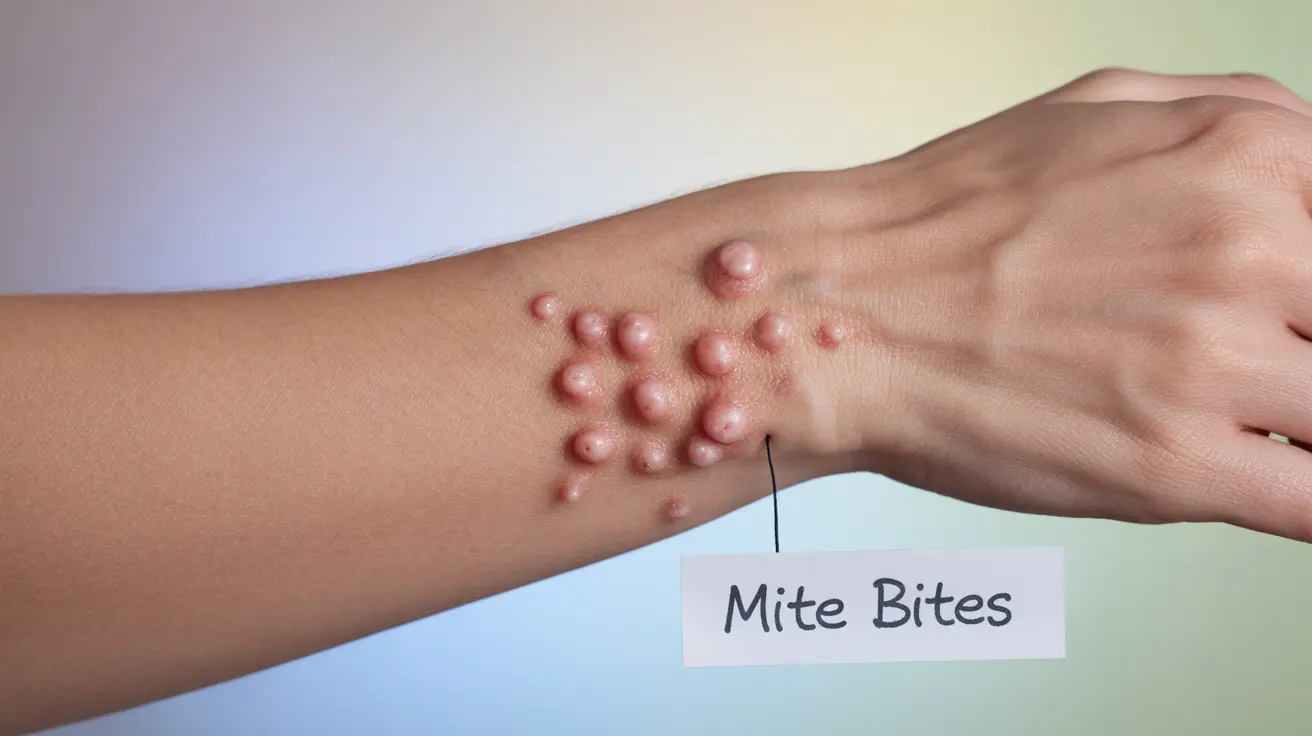Mite bites can cause uncomfortable symptoms and confusion about their source. These tiny arachnids, while often invisible to the naked eye, can leave behind distinctive signs that help identify their presence. Understanding how to recognize, treat, and prevent mite bites is crucial for effective management and peace of mind.
This comprehensive guide will help you identify mite bites, learn about effective treatment options, and understand prevention strategies to protect yourself and your home from these microscopic creatures.
Identifying Mite Bites and Their Symptoms
Mite bites typically appear as small, red, and intensely itchy spots on the skin. Unlike other insect bites that often appear as single marks, mite bites frequently occur in clusters or lines across the skin. Common symptoms include:
- Raised, red bumps on the skin
- Intense itching that may worsen at night
- Small blisters or welts
- Skin redness around the bite area
- A burning or stinging sensation
The location of bites can vary but often appears on areas of exposed skin during sleep or outdoor activities. Areas commonly affected include arms, legs, neck, and torso.
Treatment Options for Mite Bites
Immediate Home Care
When you discover mite bites, several home remedies and over-the-counter treatments can provide relief:
- Apply cool compresses to reduce inflammation
- Use calamine lotion to soothe itching
- Take oral antihistamines for itch relief
- Keep the affected area clean and dry
- Apply over-the-counter hydrocortisone cream
Medical Treatment
More severe cases may require professional medical intervention. A healthcare provider might prescribe:
- Prescription-strength antihistamines
- Topical steroids for inflammation
- Antibiotics if secondary infection develops
- Specialized treatments for specific mite infestations
Prevention Strategies
Taking proactive steps to prevent mite bites is essential for long-term protection. Consider these preventive measures:
Indoor Prevention
- Regular cleaning and vacuuming of living spaces
- Washing bedding in hot water weekly
- Using protective mattress and pillow covers
- Maintaining low humidity levels
- Regular pest control inspections
Outdoor Prevention
- Wear protective clothing in grassy or wooded areas
- Use EPA-approved insect repellents
- Shower and change clothes after outdoor activities
- Avoid sitting directly on grass or leaf litter
Frequently Asked Questions
What are the common symptoms of mite bites and how can I tell if they are from mites or other insects?
Mite bites typically appear as clusters of small, red, intensely itchy bumps, often in lines across the skin. Unlike single mosquito or spider bites, mite bites usually occur in groups and may be accompanied by a rash-like appearance. The itching tends to be more severe at night.
How do I treat mite bites at home to relieve itching and prevent infection?
To treat mite bites at home, apply cool compresses, use over-the-counter antihistamines and calamine lotion for itch relief, and keep the area clean. Avoid scratching to prevent infection, and use an antiseptic cream if needed.
What steps can I take to prevent getting bitten by mites outdoors or in my home?
Prevention includes regular cleaning, washing bedding in hot water, using protective covers on mattresses, wearing protective clothing outdoors, and using appropriate insect repellents. Maintaining good hygiene and reducing humidity in your home can also help deter mites.
When should I see a doctor for mite bites and what treatments might be needed?
Seek medical attention if you experience severe itching, signs of infection (increased redness, warmth, swelling, or pus), an expanding rash, or allergic reactions. A doctor may prescribe stronger antihistamines, topical steroids, or antibiotics if necessary.
Are all mites harmful and do dust mites bite or just cause allergies?
Not all mites are harmful. Dust mites, for example, don't bite humans but can cause allergic reactions. Only certain species of mites, such as scabies mites and chiggers, actually bite humans. Most household mites are primarily allergy triggers rather than biting pests.




